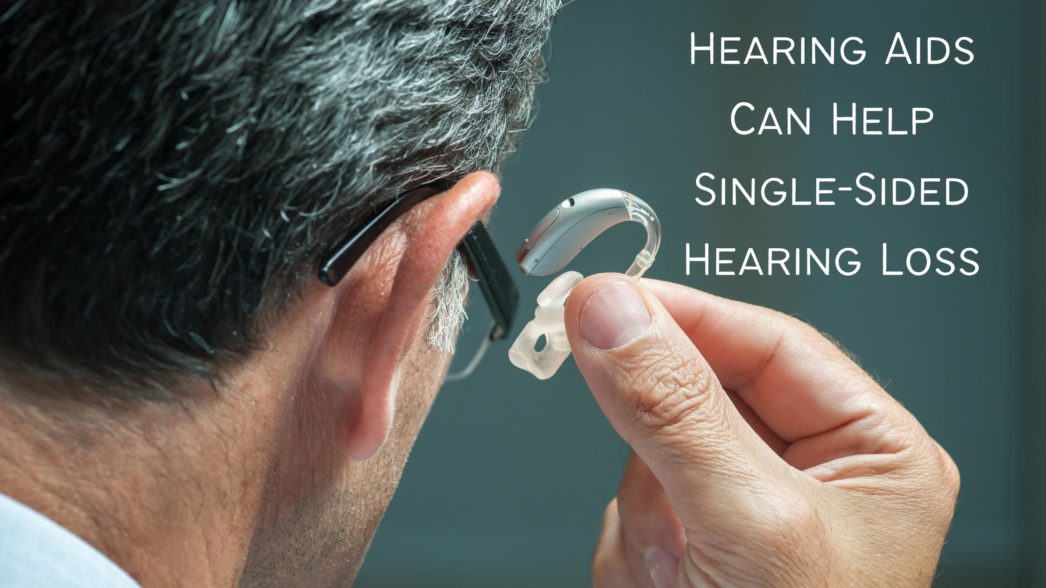When hearing loss begins, each ear rarely loses hearing at the same pace. This creates the concept of “the good ear”, in which one ear hears better than the other. In these instances, people wonder if they only need one hearing aid instead of two. This problem is that in most instances, even though one ear may be stronger it is rare to find hearing loss in only one ear. However, this is not impossible. Unilateral or single-sided hearing loss occurs when only one ear has a hearing deficit. Single-sided hearing loss makes it much more of a challenge to hear in crowded spaces full of noise however there are options for everyone, whether their hearing loss is unilateral or bilateral.
Single-Sided Hearing Loss
There are a number of potential causes of hearing loss in just one ear, including but not limited to a viral or bacterial infection, impact to the head, circulatory system disorders, acoustic neuroma, Meniere’s disease and genetic disorders. It can be difficult to identify where a sound is coming from with the loss of hearing in one ear. The brain relies on binaural hearing in order to localize sounds, which is compromised when only one side has normal hearing. It may also be difficult to determine the volume of a sound as the brain relies on nerves in both ears to combine ambient volume. This can make it more difficult to multi-task because this lack of information from one side of your head puts more stress on your cognitive load. While your brain is working overtime to fill in the missing gaps in audio information it may make it less able to focus on two things at once.
Treatment for Single-Sided Hearing Loss
While most hearing loss is irreversible the good news is that it can be treated adequately with different treatments. The most common treatment for this condition are hearing aids which can amplify the specific sounds the affected ear struggles to register, making them clearer. This can balance out issues to make the affected ear have a similar ability to the ear with healthy hearing.
Bone Anchored Hearing Aids
Another way in which single-sided hearing loss is addressed is using BAHAs (bone-anchored hearing aids). They are helpful when the problem is in the outer or middle ear and cannot reach the cochlea, even with a hearing aid. When the cochlea is healthy then these are the most ideal options. BAHA has a microphone outside the ear just like many other hearing aids however a simple surgery places a titanium fixture into the bone in your skull. This allows sound to be delivered via vibrations in your skull which cause an abutment to vibrate, directly stimulating the cochlea.
CROS Hearing Aids
There are hearing aids designed specifically for single-sided hearing loss. A CROS (contralateral routing of sound) system uses a singular microphone and receiver, which are in two different devices on each ear. The ear with healthy hearing has a microphone which sends auditory information to the ear with hearing loss via a receiver. This allows the ear with poor hearing to hear what the other ear is hearing via a wireless signal.
BiCROS Hearing Aids
A BiCROS (bilateral microphones for contralateral routing of sound) system is used for people with hearing loss in both ears. This system employs two devices, a microphone in the ear with less hearing ability while a conventional hearing aid is worn in the ear with less hearing loss. This emulates the effects of CROS technology with people who have a “good ear” and struggle from asymmetrical hearing loss.
Treating Hearing Loss
The worst thing that you can do for your hearing loss is to ignore it. Untreated hearing loss leads to chronic communication issues that only get worse over time. The first step is to take a test to find out what type of hearing support will work best for you. If you haven’t already, make an appointment for a hearing exam. We can find out the extent of your hearing loss and help you find a solution that can keep you connected, active and engaged in the life you love.


